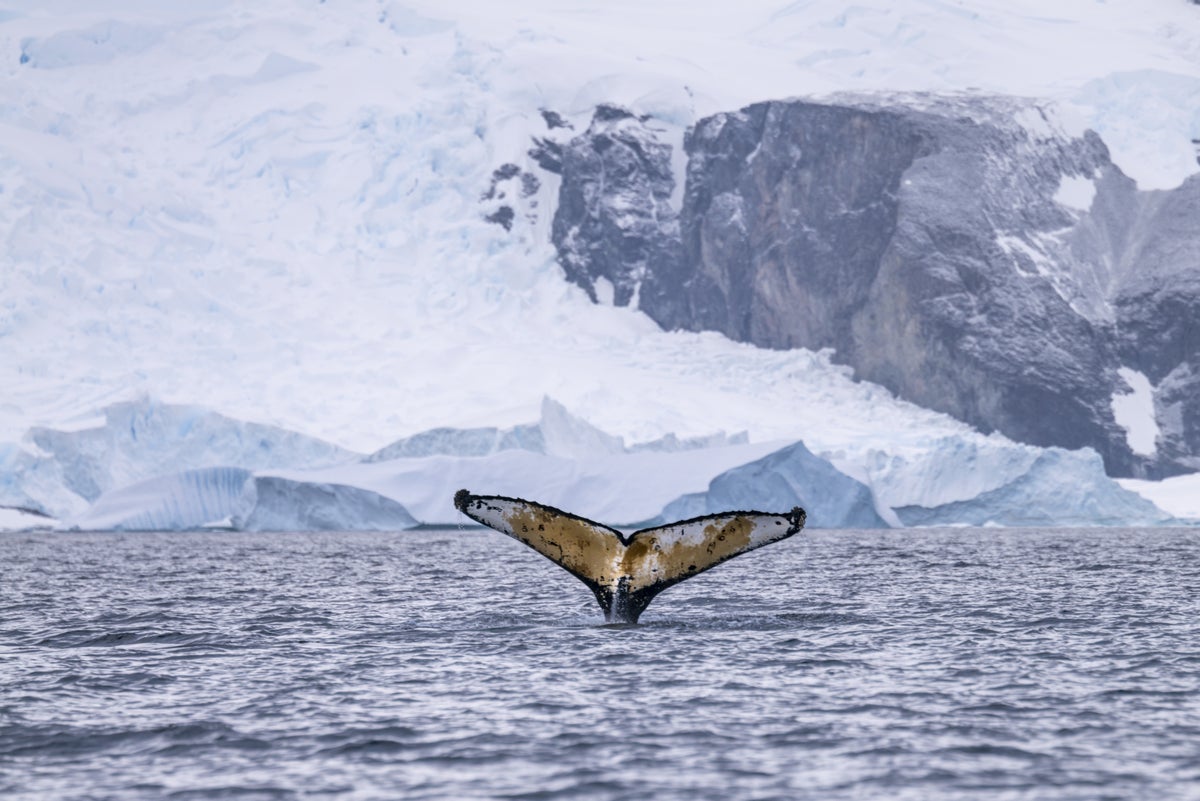
There’s no quiet on earth so intense as the Antarctic on a clear morning. We’re in a sheltered bay ringed by snow-drenched peaks, the impassive faces of glaciers the size of tower blocks dropping vertically into the water. The sky above is the same blue as the cyan-tinged hearts of the icebergs bobbing silently on the gentle swell, and the only sound is the faint crackle of brash ice against our small boat. So when the peace is shattered by the sound of a 30-ton whale snoring, it’s impossible to ignore.
The humpback is “logging” – floating sleepily at the surface so it can breathe. Every so often spray flies up from its blowhole, with a sound like a giant’s sneeze. And when Ari Friedlaender raises a crossbow and shoots, I hold my breath. We watch as the bolt pierces the humpback just behind the dorsal fin, before we break into whoops and cheers.
The marine biologist is here in the Antarctic not to slaughter whales, but to study them. The crossbow shoots harmless, modified bolts which take a miniscule sample of skin and blubber, allowing a team of scientists to gather data including sex, genetic profile and hormone levels that can signify a range of factors, from pregnancy to stress response. For a whale with a 15cm layer of blubber under its skin, the biopsy bolt is no more painful than a gnat bite; the most extreme reaction we see after shadowing the scientists for four days is a startled tail slap, throwing up a rain of spray.
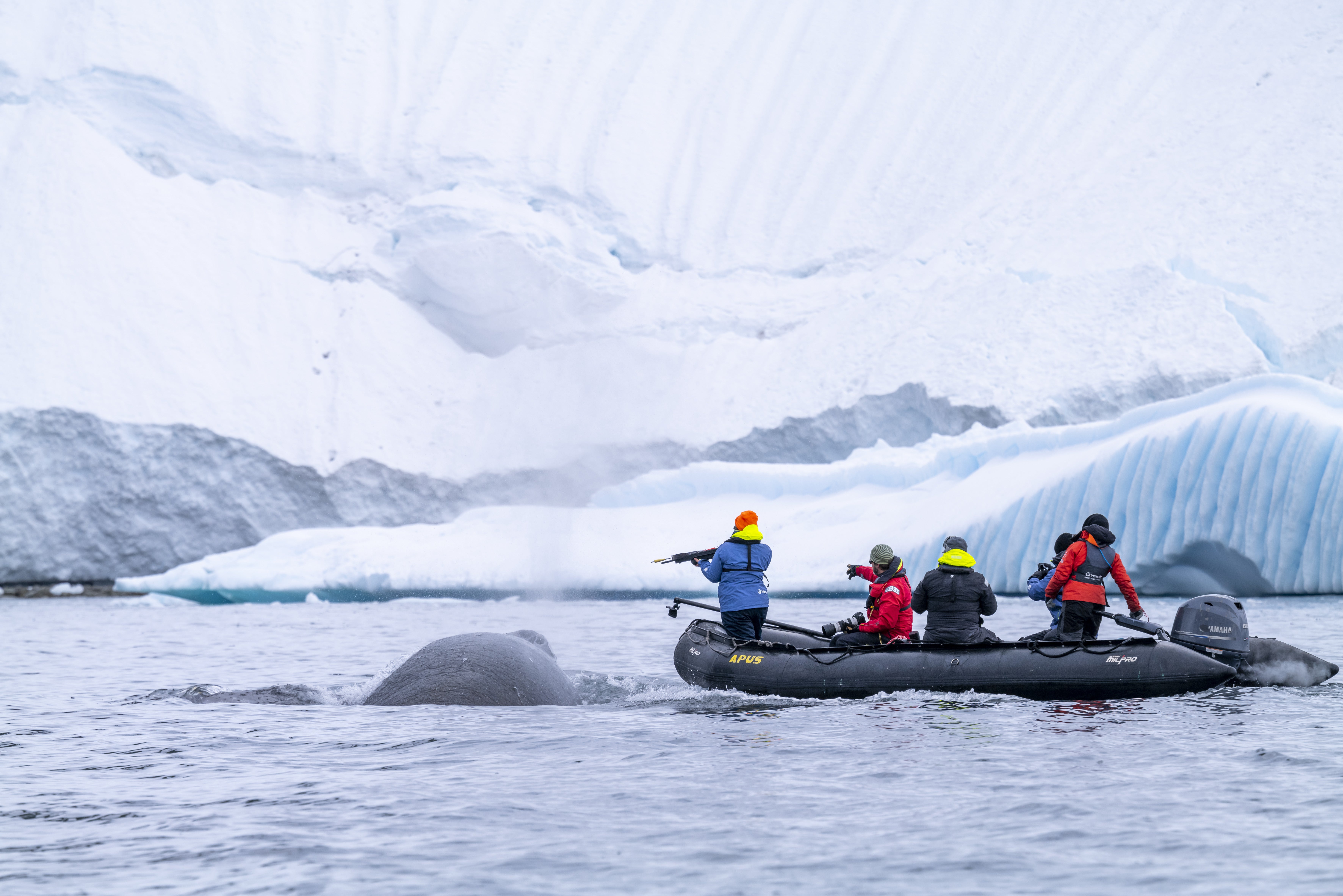
Dr Friedlaender is a renowned whale expert who has been studying the Antarctic cetacean population for 25 years. Using biopsies, drone footage and bespoke technology – including a $12,000 (£9,800) computerised tag with motion sensors, audio, video and GPS which stays attached to a whale for up to two days – his team is building the most comprehensive picture ever of the lives of the cetaceans that migrate to these frigid waters to feed during the austral summer.
The study of whales is not an easy business. When your subject spends most of its time beneath the ocean’s surface, human observation alone just doesn’t cut the mustard. Add in the inaccessibility of Antarctica, and scientific endeavour becomes doubly costly and challenging.
Read more on sustainable travel:
Chartering a ship purely for research purposes is almost prohibitively expensive, so 15 members of Friedlaender’s 20-strong team have spent the season sailing with tourist ships. Through a partnership between WWF Australia and adventure tour operator Intrepid Travel, the scientists on board our expedition cruise ship receive free passage, and travellers who’ve signed up and shelled out to experience Antarctica benefit from front-row seats to witness cutting-edge research happening in the field.
Every evening, there’s a debrief in the ship’s lounge, with Friedlaender and fellow scientist Natalia Botero Acosta talking us through their findings. These are accompanied by drone footage worthy of a BBC Earth documentary, helping us understand that what may have looked from the heavens like a humpback cheerily waving its pectoral fin was actually a minutely choreographed episode of bubble feeding.
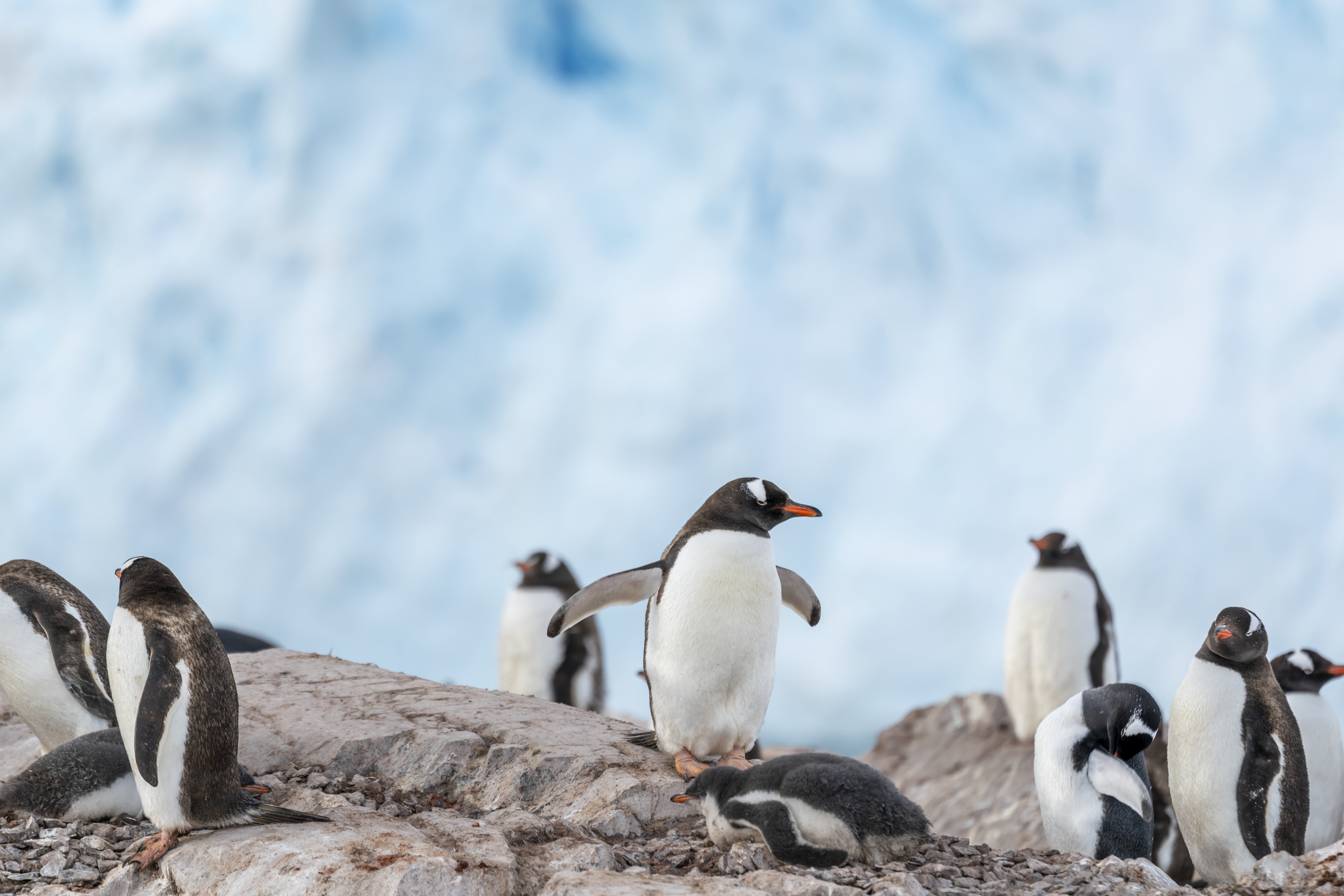
The results have a purpose beyond the purely academic. While numbers of most species have bounced back since the ban on whaling in 1986, a new array of threats are looming, putting these majestic mammals once more at risk. Commercial krill fishing is becoming increasingly concentrated on the Antarctic peninsula – right in the heart of the whales’ traditional feeding grounds, and the hotspot for Antarctic tourism.
“The main function of our data is to show the times and places where the whales cannot be in competition with another krill predator – which the fishery is,” explains Friedlaender. “We’re not saying don’t fish for krill, but if you’re going to do it, don’t do it in these areas at this time of year, and give those animals every chance that they need to thrive.”
We take the science that’s generated here and try to convert that to action
“We take the science that’s generated here and try to convert that to action,” says Chris Johnson, Global Lead for the WWF’s Protecting Whales & Dolphins Initiative. Proposals are in place for a network of marine protected areas (MPAs) around Antarctica, but after a big win in 2016, establishing the largest marine reserve in the world in the Ross Sea, progress has stalled. The research undertaken on our ship will add momentum to calls for the area around the Antarctic peninsula to be protected next.
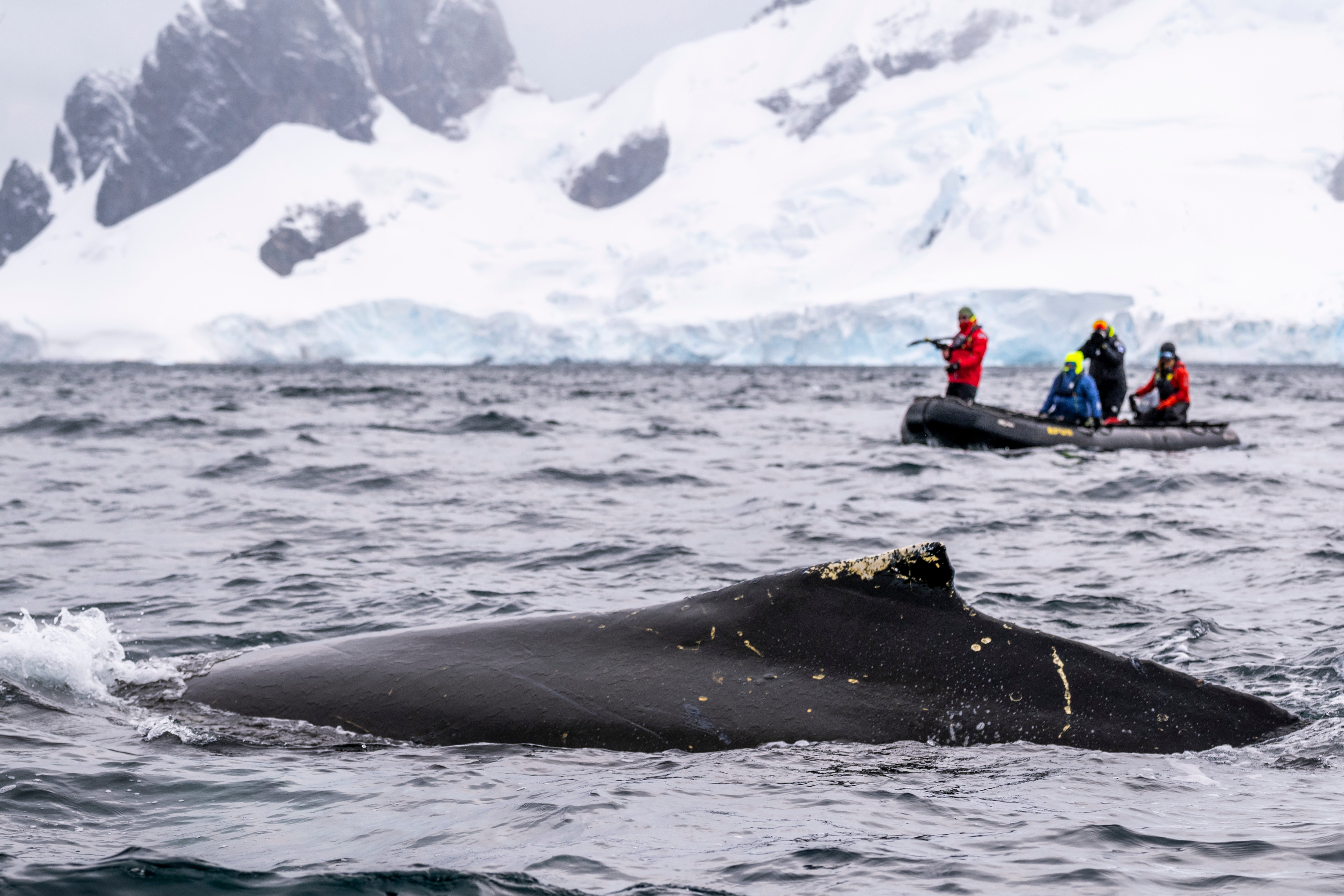
There is a second major threat to whales, and indeed all the wildlife we see on our trip, from the stocky gentoo penguins waddling with dogged, endearing vigour up icy hills towards their nests, to the leopard seals we pass lazing on ice-shelf beds like barely animated sausages. Antarctica is warming three times faster than the global average. Sea ice is receding, with record lows recorded for the second year in a row. Krill populations directly depend on sea ice, and as a primary building block in the marine food web, low krill levels mean everyone goes hungry.
I confront the elephant – or should that be the whale? – in the room. Travelling to Antarctica is vastly carbon heavy. Aware of this, Intrepid Travel offsets double the carbon of its trips in the region, but given the direct threat of climate change to this wildlife, is tourism here justifiable?
Both Friedlaender and Johnson are convinced that well-managed tourism here is positive – and not only because their work in the region would be impossible without it. “Communication is equally as important as research,” says Friedlaender. “When else are we going to have a captive audience of people who have paid a lot of money to come down here and witness this? We need to minimise the impact while maximising the opportunity.”
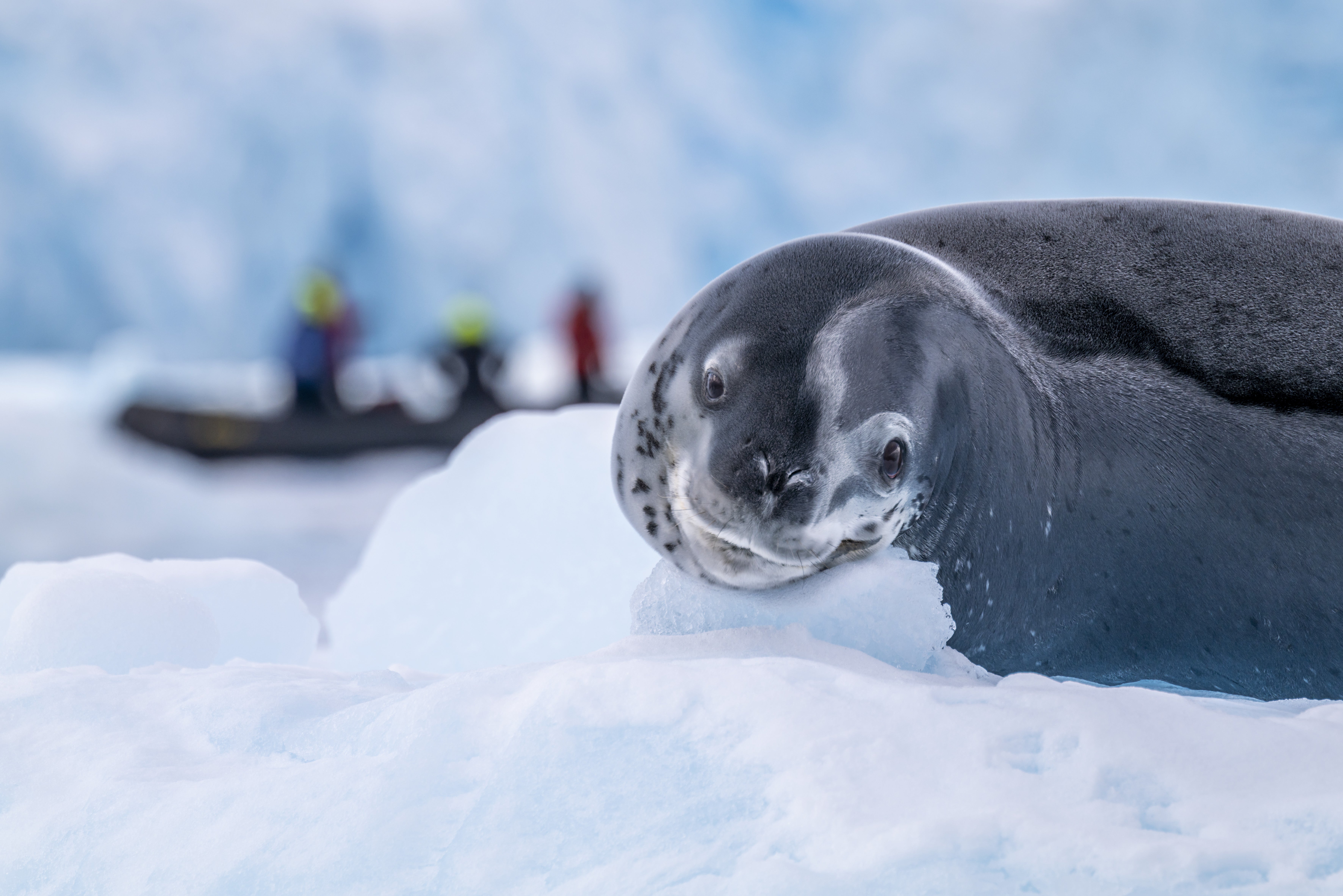
An auction night on board raises money for further research, and we’re primed to become advocates for Antarctica, urged to forgo krill oil supplements and farmed salmon, to consider minimising our meat consumption and take other steps to cut our carbon burden. The messages are undeniably more compelling delivered in this pristine wilderness, but there remains an underlying irony which it’s important to acknowledge. When the Antarctic Treaty was signed in 1959, it was agreed that the continent should be protected as a place for peace and science. Tourism can play a part in that, but as our ship is battered by high winds and waves across the Drake Passage back to Argentina, I’m somewhat relieved that weather keeps the Antarctic travel season down to a brief three months a year. Tourists are visitors who must ensure that we don’t overstay our welcome.
Travel essentials
Intrepid Travel’s 11-day WWF Giants of Antarctica trip on Ocean Endeavour departing March 9, 2024 starts from £5,800, including accommodation, activities and meals.







